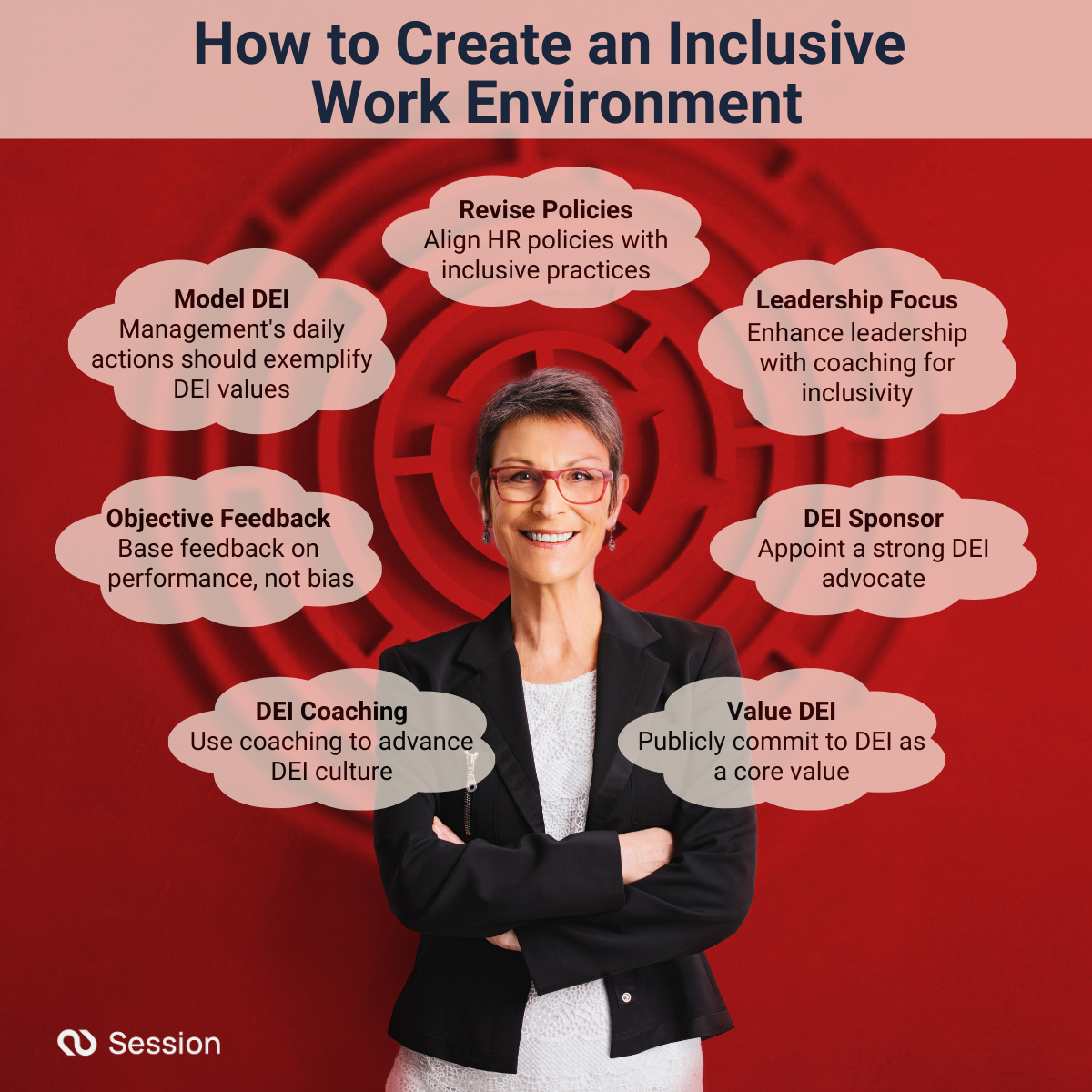As the voices of change become more audible, we need to be really clear about Diversity, Equity, and Inclusion in the workplace. We need to grasp that it is no longer a vanity construct to flash around for corporate social responsibility bragging rights. It’s a business need.
DEI is all about talent – attracting, growing, and retaining, and facilitating a culture and structures with equal conditions based on sustainable inclusive leadership. But with CEOs of large EU companies still 92% male and non-white Americans paid $0.70 for every $1 for white men, how are we going to change? How can we recognize and hire for diversity? How can your company do better?
Diversity, equity, and inclusion may have become buzzwords lately but they have long been a business necessity. As we face disruptive change and a world of digital transparency, companies lacking diversity won’t just be inferior problem solvers, they will be roundly chastised by their markets. It’s time to become accountable to societal values and appreciate that DEI is now the only way forward.

What is Diversity, Equity, and Inclusion?
If you haven’t heard of DEI in the workplace, there is a lot to learn. Here is where it starts.
Diversity is having a workforce made up of people from different races, ethnic minorities, socio-economic standings, religions, ages, LGBTQIA+, and cultures. They come from a variety of backgrounds and bring a collection of novel lifestyles, experiences, abilities, and perspectives.
Equity refers to the opportunities and treatment afforded to each member of staff. Does a person's gender, race, sexual orientation, or background directly or indirectly reduce their economic and professional opportunities at your organization?
Inclusion refers to how welcoming an organization is to all perspectives, ideas, and voices and whether diverse groups are represented at leadership levels of your company. Do minority individuals get promoted into management? Are all groups represented in decision-making? It is important to note that diversity and equity don't work without inclusion. You can invite all the races and genders in the world to the meeting but if you never hear their voices, they may as well not be there.
DEI is a Business Need!
DEI is not a numbers game of token proportional representation. It has multiple, very real business purposes, especially in our globalized and digitized economy. Let's take a look at why DEI is now a business-critical need and why DEI should not be treated as performance branding. Here is a proven list of why DEI matters and how it helps your business flourish. DEI secures:
1. Better ability to recruit and retain talent
The workforce is now predominantly millennials and will soon be joined in the majority by Gen Z. Both are exceptionally socially aware and active and want to work for companies whose values align with their own. They want an inclusive society where all members of society are fairly treated and represented.
If diversity is not an exemplified priority for you, diverse talent will not want to join or stay with you. This is because diverse employees who do not see diverse people in leadership believe their development opportunities will be stunted. They will struggle to believe that promotion is distributed equally and that this would not be a barrier they face elsewhere.
2. Touch Point with Client Base
Migration and freedom of movement have meant that many societies are now multicultural. This should be represented in your team because common ground and affinity bias recognition is important for the contact and rapport workers can create with customers. Diverse, multicultural teams better understand where multicultural customers come from and can take their needs, wishes and demands into consideration when decisions are made internally in the company.
3. Enhanced Problem Solving
Employees solve problems using creativity and experience. If their experience is mostly homogeneous, the capacity for differing opinions and thus more ideas and perspectives are much lower. Diverse talent pools bring diverse solutions and though it may be challenging to work with people different from oneself, you can be assured that the solutions provided by the diverse teams better, more innovative and creative than the ones delivered by homogeneous teams (as long as the teams-members feel psychological safe and free to speak up, of course).
4. Higher Performance
Workplaces focusing on employee engagement, inclusion, and belonging outperform companies not focusing on DEI. Inclusive leaders are 17% more likely to declare their teams as high performing, 20% more likely to agree that their decision-making is the best it could be and 29% are more likely to enjoy strong, collaborative relationships. Even attendance is improved by inclusion as discretionary absenteeism declines.
Effectively, your organization becomes supercharged through DEI. And just think of the flip side. What will happen if you don’t embrace engagement and inclusion and competitors do? You will be left with a significant disadvantage.
How to create an inclusive work environment?
There are many different instruments to impact diversity, equity, and inclusion within an organization but the key is to start small. Work with what you have because incremental culture change is the most likely to work. Sweeping programs often fail because they are too big a leap when it comes to creating real change in the workplace.
By starting small you build up an inclusive work culture step by step ensuring lasting impact.
1. Start with Leadership: Grow Sustainable, Inclusive Leadership
Company culture is almost exclusively engendered by leadership figures. They are the ambassadors of your values and that is where employees take their cues from. That’s where you start.
The paradox is that most leaders regard themselves as inclusive leaders but that is far from the case when you ask their people. Leadership training programs can provide tools and knowledge, but when it comes to practice and execution, sustainable inclusive leadership behavior requires individual coaching.
Coaching helps leaders to analyze their behaviors, assumptions, and unconscious bias and find new ways to collaborate and build relationships. Coaching leaders can be the key to unlocking a winning inclusive culture with diverse talent that will make a difference to your long-term business future.
2. Management Should Model DEI
Whether you are the CEO or HR manager, you need to exhibit DEI as a value. Think about your everyday behaviors and what they communicate. Who do you go for lunch with? Do you know everyone’s name? Who do you invite to speak in meetings? What do your non-verbal messages say about your values? If you expect others to prioritize DEI, leadership needs to move in the same direction.
Ask all managers to get to know their teams and motivations. Understand their strengths and their goals. Kinship and dialogue are fuel for inclusion.
3. Review Communication, HR Policies, and Procedures
Take a close look at your HR policies and procedures. Are they mirroring an inclusive way of thinking and acting? How do you recruit, promote and reward? How do you nurture and grow your talent? Do you have an Eq and Inclusion Policy that is both in line with the law and supportive of minority groups?
Policies are important frameworks and actionable tools that support your culture. If DEI doesn’t exist on paper, it arguably doesn't exist at all.
4. Give Tangible Performance-Based Feedback Eliminating Subjectivity
Employee feedback is an area of controversy when it comes to the difference between the appraisals of men and women.
As noted in separate Stanford and Harvard studies, women are less likely to receive feedback that is directly linked with specific outcomes. They are told about general behaviors and subjective issues like communication. 76% of women receive negative feedback on communication styles compared to 24% of men and it usually comes down to the manager’s unconscious bias. The bias that says women should be more gentle and supportive so when they speak up it seems more abrupt.
Subjective feedback holds people back because it rarely offers a tangible way to progress. It tends to concentrate on ‘fixing’ the person rather than paving the way for leadership roles. This is not a problem men usually face.
Eliminate subjectivity from feedback meetings and pay raise negotiations. Everything should be specific to performance. Acknowledge detailed contributions and avoid subjective reasoning when it comes to communication. Explain the exact routes to progression and tangible metrics required for promotion or pay rises. Challenge your own thoughts about pushing back against women and minorities.
Even the playing field so everyone knows what's necessary to hit the next level.
5. Appoint a DEI Sponsor
A DEI sponsor is the person responsible for championing the aims of diversity and inclusion. Be tactical about your choice. The temptation might be to pick a diverse team member but they are easier to dismiss. The best suggestion is to pick the strongest voice in the room. The person you know can push back and drive the message confidently.
Equip the sponsor with the tools they need. Invest in their success as they often need coaching to build the skills and confidence. Remember, it is a business need. It requires a financial commitment.
6. Announce DEI as a Key-Value
Introduce DEI as a key-value and commitment. Some organizations may be concerned that announcing DEI as a value would imply that it was previously overlooked and demographics were intentionally hindered. That is not the case. There doesn’t need to be fault attached to a change of direction. Honest, transparent, and open communication is the key.
7. Offer Outside Coaching
External coaching plays a vital role, and for many organizations it can be a game-changer in the fight for attracting, growing, and retaining talent. It empowers organizations to move toward a DEI culture and create a strategic imperative business advantage.
Coaching to Reduce Post-Maternity Leave Brain Drain
For instance, for many companies, losing female talent post-maternity leave is a major brain drain. Ernst & Young UK noticed this problem, and to counteract it, they studied the barriers and found that offering one-to-one coaching to their senior women pre-parental leave, during leave and post-parental leave eased the transition from practical and professional standpoints. Furthermore, they also created two mandatory group coaching sessions for the managers responsible for those taking maternity leave.
Offering coaching allowed managers to comprehend the demand for flexibility and alternative working styles. By the end of their study and coaching, EY reported impressively high-performance scores for returning women from day one. 77 percent of those who returned from maternity retained the same performance management grade or improve it, showing they hit the ground running.
Coaching to Even the Playing Field for DEI Opportunities
Beyond the EY example, coaching allows companies to overcome the real and perceived barriers that hinder DEI talent progression.
Minorities tend to feel socially exposed and more vulnerable compared to their peers, so granting them a psychologically safe environment, which the coaching itself can help create, can be a major factor in their growth.
In the coaching environment, employees don’t suffer the same competency and performance worries they would in the work setting which means they can truly explore their abilities. The employees deconstruct the barriers and work on the facets of their skillset that may have held them back without the concern of drawing attention to weaknesses. Coaching affords employees the opportunity to safely unshackle their potential and bring their best selves to work.
Coaching to Create Psychologically Safe Workplaces
Furthermore, coaching challenges and helps both individuals and organizations to analyze intentional and unintentional structures and biases in a protected environment. Clients are safe to speak their minds, have their perspectives challenged, and learn new soft and hard skills in a comfortable setting. Through coaching, teams can also learn how to best admit mistakes, contribute ideas and speak up without letting others down, creating a psychologically safe work environment, allowing everyone to feel heard and included in the process.
In Conclusion
The voices of diversity, equity, and inclusion activism are loud and unapologetic because they have suffered for much too long. Though we see the #MeToo and Black Lives Matter movements now, it will be something else next. Uncomfortable lights will continue to be shone until there is inclusivity and equal participation in opportunity.
Diversity, equity, and inclusion are not nice to haves anymore. They are business-critical needs. They are what the future generations AND markets are calling for. The best workforces going forward will show equal representation at all levels of enterprise with equal pay.
If DEI is part of your future but you remain uncertain on how to make the right changes for your organization, you are not alone. Many companies share the same concerns. Session is prepared to help you. We have a variety of expert coaches specializing in DEI strategy ready to help you make the world a better place. Get in touch if you would like to discuss how you can lead your industry from the front!












